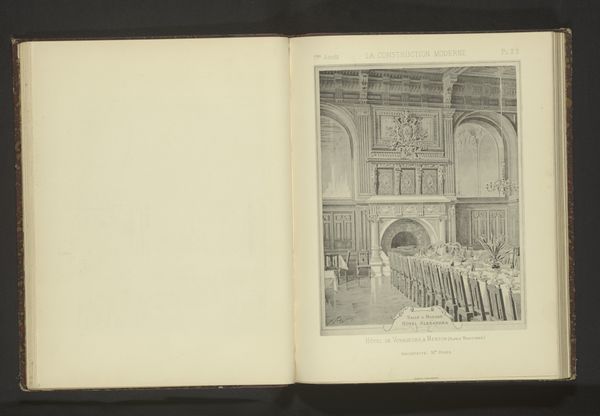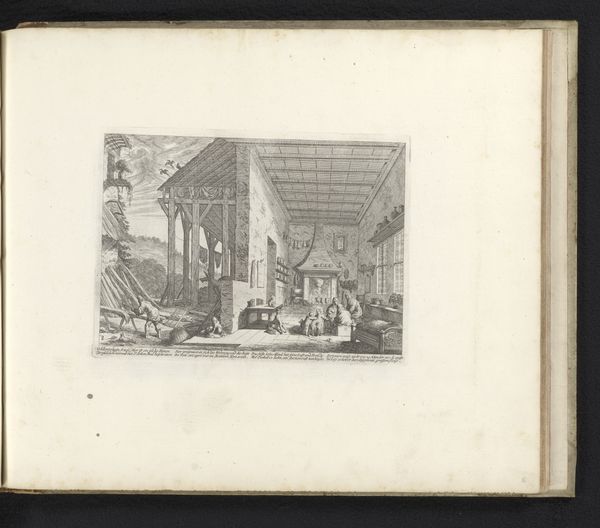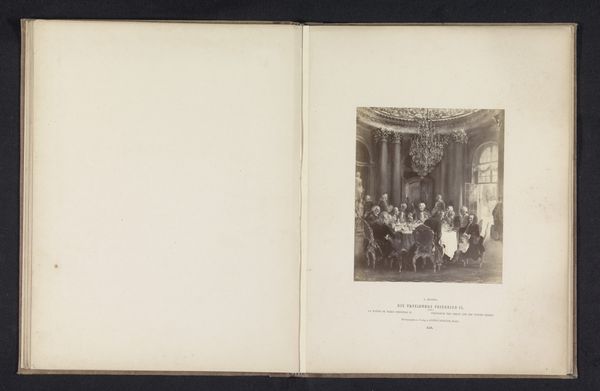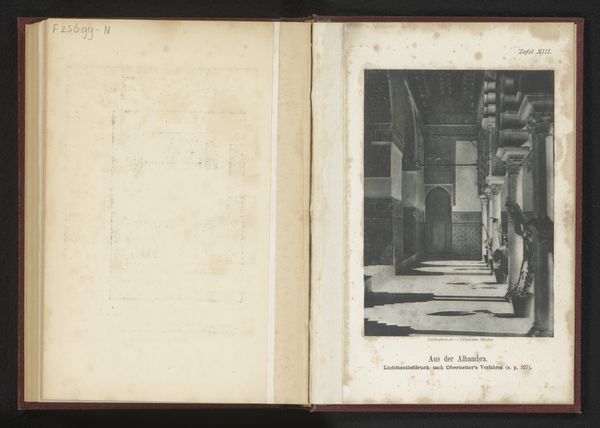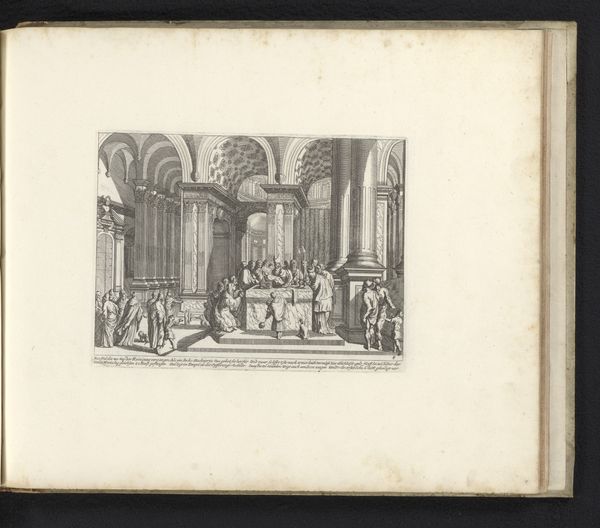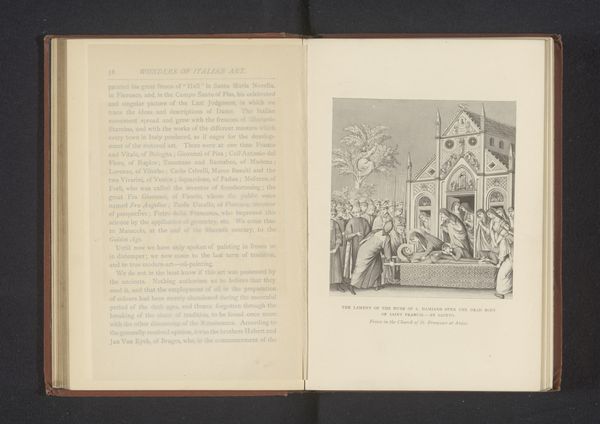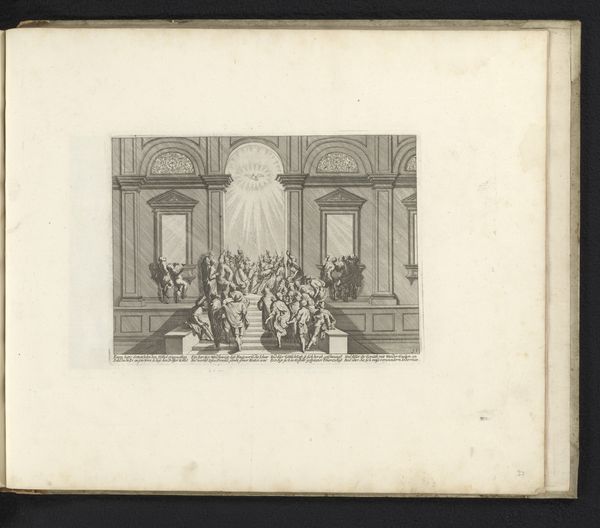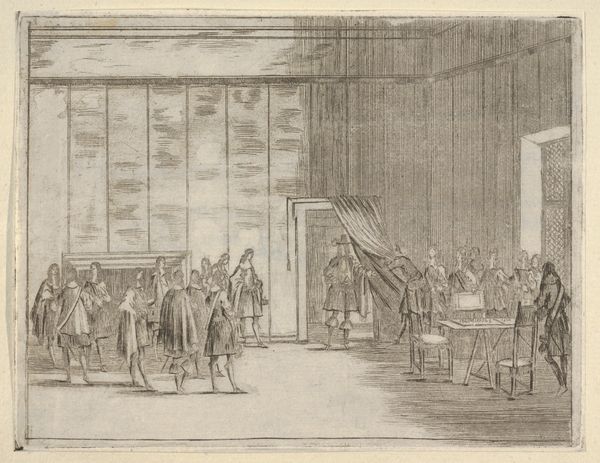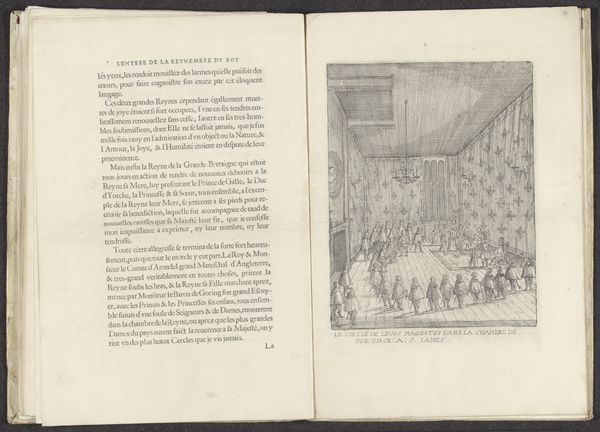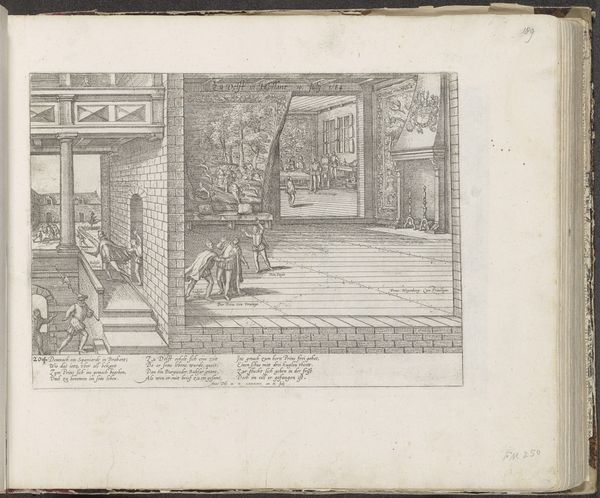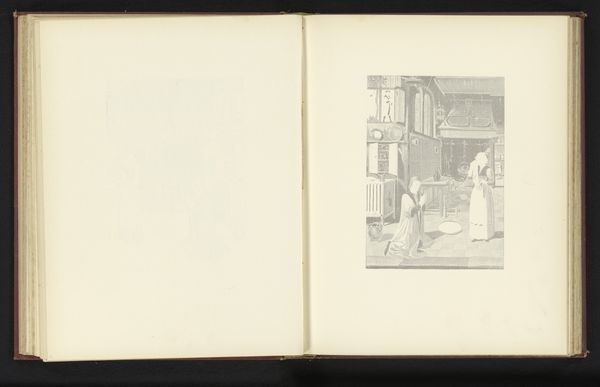
print, engraving
#
portrait
#
baroque
# print
#
figuration
#
line
#
history-painting
#
engraving
Dimensions: height 276 mm, width 194 mm
Copyright: Rijks Museum: Open Domain
Curator: Let's examine "Maria de' Medici ontvangt de Lord Mayor van Londen," an engraving from 1639. The print depicts a historical event, offering insight into courtly interactions. Editor: The immediate impact is the strong, almost oppressive use of line work. It’s incredibly detailed, yet confining; a stark contrast to the grandeur one might expect from such a scene. The space feels almost boxy. Curator: Indeed, the medium and style—a line engraving produced during the Baroque period—dictates much of that visual effect. This was likely a reproduction for wider distribution, thus speaks to the availability and consumption of images illustrating power dynamics at the time. Editor: Precisely. The use of linear perspective draws our eye, but the lines themselves flatten the subjects, diminishing any real sense of depth. Observe how the interplay between the figures creates rhythm throughout the room, echoing the courtly etiquette portrayed. Curator: From a materialist perspective, it’s interesting to consider the role prints like these played in solidifying Maria de’ Medici’s image and authority across geographical boundaries. The accessibility of prints meant that idealized representations of power could circulate widely. Who commissioned this work? What was their intent in the distribution of this depiction of courtly proceedings? These are crucial points in assessing its value. Editor: I’m more intrigued by the visual encoding of power within the composition itself. Notice how Maria de' Medici is positioned on a dais, elevated and central. The Lord Mayor and his entourage appear almost as secondary players, arranged for visual consumption by her. Curator: Don't forget the social context—prints of this type are indicative of larger workshop and patronage systems. It’s not solely about what’s depicted, but who had the resources and the access to create and distribute the image, thereby controlling the narrative. Editor: A potent reminder. The meticulous lines reveal the labor, yet obscure its larger ramifications of the socio-economic impact that is less apparent on the surface, wouldn’t you say? Curator: Absolutely. Analyzing this print compels us to question the systems of labor involved in image-making and their link to reinforcing established hierarchies. Editor: And for me, the lines and careful rendering evoke this same idea of hierarchies and power—in pure visual form. A fascinating conversation this piece initiates.
Comments
No comments
Be the first to comment and join the conversation on the ultimate creative platform.
